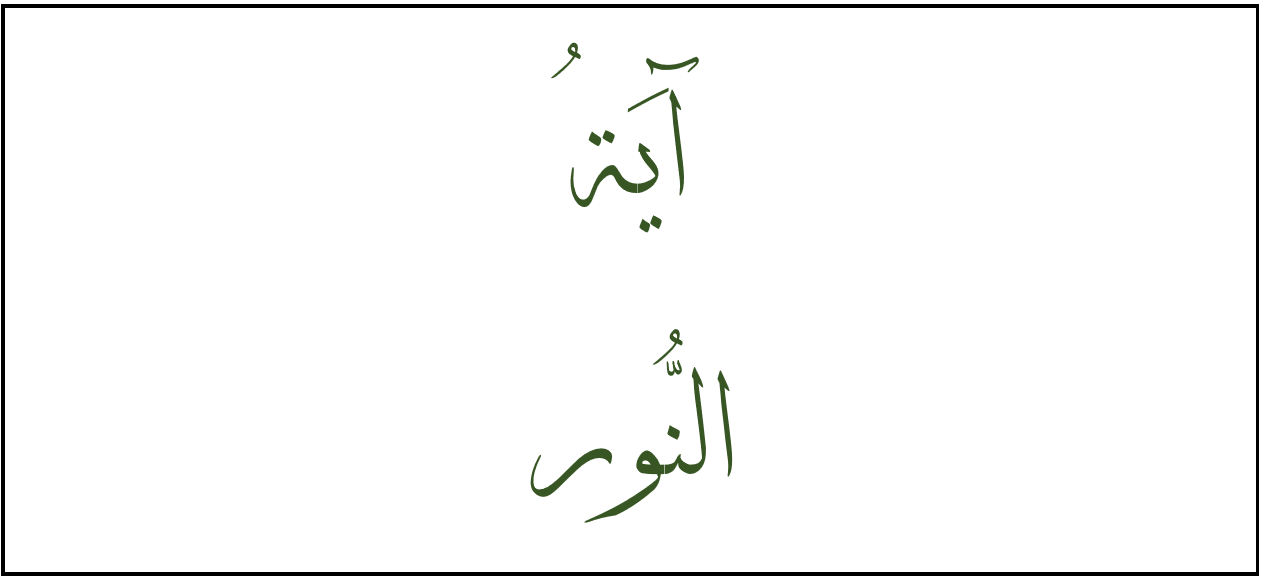

Discover more from Heavenly Order
The topic of the Quran’s naẓm, “arrangement” or “composition,” has achieved significant interest in contemporary study of the scripture, giving rise to a number of extremely interesting and insightful studies of the coherence and structure of many suwar.
In pre-modern times, ring composition was a highly valued way of structuring a text. It demands profound literary sophistication and ingenuity, endows the text with rich meaning and internal structure, is aesthetically impressive, and rewards the attentive reader with the excitement of discovery.
It therefore makes great sense that Allah ﷻ employed such a device, over and over again, throughout the Quran. We’ve previously looked at the structure of Āyah al-Kursī, Sūrah al-Fātiḥah and Sūrah Yūsūf, but let us now turn our attention to another famous āyah, this one found in Sūrah al-Nūr (The Light), which beautifully describes the faith and heart of a believer coming into contact with revelation. This is none other than Āyah al-Nūr (The Āyah of Light). One aspect of this amazing āyah that sometimes gets overlooked is that the description of the parable of light appears to be in a ring structure:
That “Allah is the light of the heavens and the earth” ([A]) signifies that He is both the source of physical light that manifests the beauty of creation and allows His creatures to see, as well as the source of spiritual light - guidance - that enlightens His creatures. Allah ﷻ, as the source of this “light,” is thus in the position to “guide to His light whomever He wills” ([A’]).
[B] describes the lamp that gives off the light, part of which is intrinsic to it and part of which comes from an outside source. When the lamp inside the glass (i.e., the light contained within a pure heart) is ignited by a radiant flame (i.e., revelation), the effect is “light upon light” ([B’]).
[C] describes the fuel of the lamp - the oil, which may be understood as a symbol for the pure human spirit. Because it derives from such a “blessed” source, the oil “almost radiates even though a fire had not touched it” ([C’]). That is, the pure human spirit possesses its own glow even before the light of revelation kindles it.
The center ([D]) emphasizes that the source of the inner light of the human being is “neither of the east nor of the west.” All human spirits originate from a single, non-terrestrial source. Therefore, pure human spirits are not confined to any geographical location, but are dispersed across the earth, regardless of direction. Allah ﷻ does not restrict His guidance to any particular race, region, or nationality, but only requires that a person has kept his pure nature intact. It is when the light of revelation reaches such people that it ignites their spirit, producing the “light upon light” that illuminates the dark corners of the world.
وَاللهُ أَعلَمُ - And Allah knows best
Sources
Farrin, Raymond. Structure and Quranic Interpretation: a Study of Symmetry and Coherence in Islams Holy Text. White Cloud Press, 2014.
Ali Khan, Nouman and Sharif Randhawa. Divine Speech: Exploring the Quran as Literature. Bayyinah Institute, 2016.
Subscribe to Heavenly Order
Exploring the Divine Structure and Coherence of the Quran. Join us as we dismantle the myth of the "disjointed" and "random" organization of Islam's Revealed Text.











